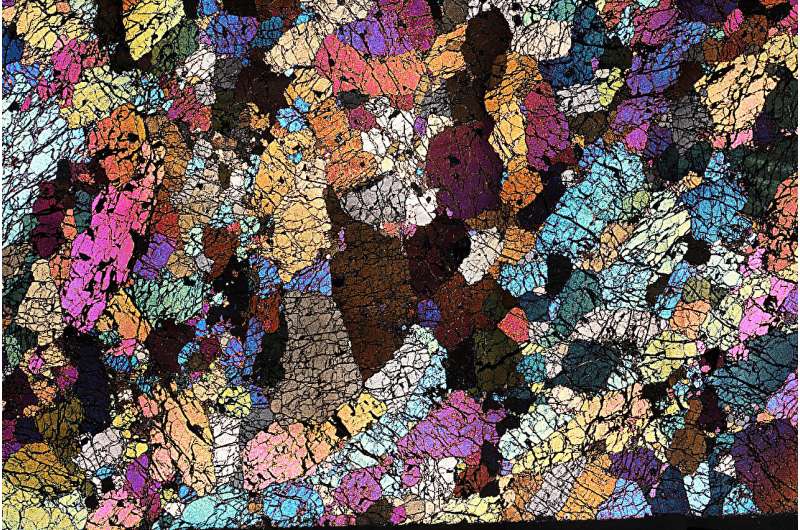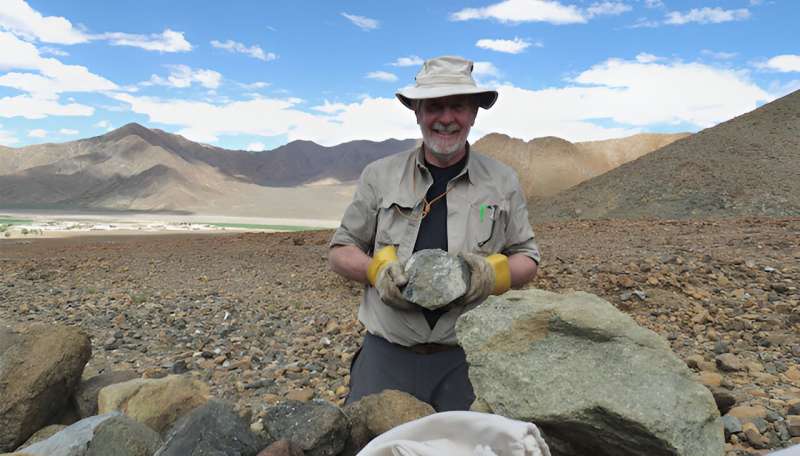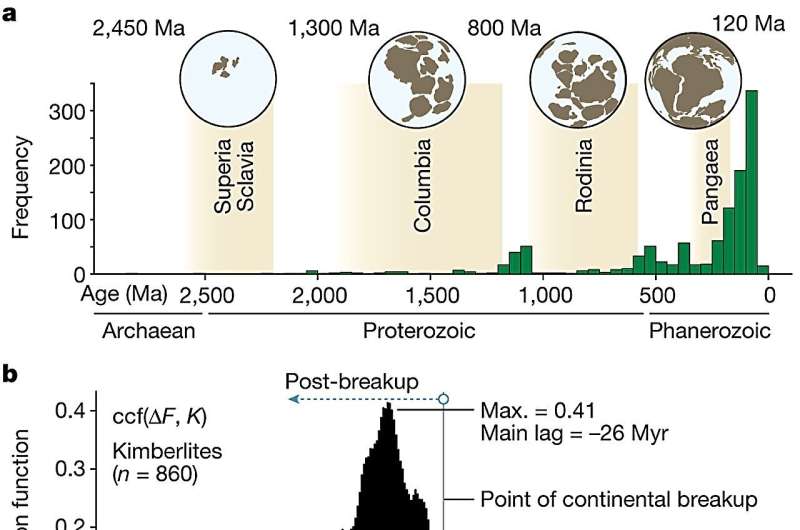This article has been reviewed according to Science X's editorial process and policies. Editors have highlighted the following attributes while ensuring the content's credibility:
fact-checked
peer-reviewed publication
trusted source
proofread
New geology study cracks the code of what causes diamonds to erupt

New research into the forces that bring diamonds to the surface from deep in the Earth's mantle could help locate undiscovered diamond deposits, say Macqurie University geologists.
In a new study published in Nature, Macquarie University geologists Emeritus Professors Suzanne O'Reilly and Bill Griffin worked with a team led by Dr. Tom Gernon at the University of Southampton to track the past billion years of patterns of continent formation and tectonic plate movement.
Linking these patterns with known deposits of diamond-rich kimberlite rocks, they found the breakup of tectonic plates is the main driving force behind the generation and eruption of diamond-rich magmas from deep inside the Earth.
"Australia's mineral exploration has already found most of the world-class and large mineral deposits visible at the surface, in the one-third of our continent not buried under hundreds of meters of dirt and young sediments," says Professor O'Reilly.
The two-thirds of Australia with deep sediment cover should contain the same proportion of world-class mineral deposits as the visible regions, she says—but traditional discovery methods won't work to find these minerals vital for a sustainable future.
"For example, it is estimated that by 2030, the global demand for cobalt used in renewable energy batteries will be around 50 times what it was in 2016. Unless we can become self-sufficient in this strategic metal, Australia may be held to ransom with huge price increases and chronic shortages," says Professor O'Reilly.

Predicting future exploration sites
Their work in understanding the deep processes that create economic mineral deposits has helped the researchers develop a new predictive strategy to find minerals called the GLAM approach (Global Lithospheric Architecture Mapping)—developed with industry collaboration.
"This has revolutionized the way mineral exploration is now done by progressive industry explorers," says Professor Griffin.
The new research has demonstrated this technique, showing how tracing the unique process of diamond formation can help geologists locate previously unknown diamond deposits.
More than jewelry
Jewelry makes up a fraction of the world's diamond trade; most diamonds are used in industrial applications where they are valued as the hardest natural mineral available, and used in cutting, polishing and drilling.
Humans have mined diamonds for more than 3,000 years, and centuries of exploitation, slavery and conflict were associated with diamond mining. However the establishment of the World Diamond Council's international certification scheme to reduce "conflict diamonds" in 2000 has since led to diamonds from unethical sources now making up less than one percent of global trade.
Despite the increasing availability of synthetic (lab-grown) diamonds, the demand for natural diamonds (for both industrial and decorative uses) continues to grow.
At the same time, discoveries of new diamond mines are slowing. Most diamonds were formed between one billion and 3.5 billion years ago in the Earth's mantle, more than 150 kilometers underground, and rise to the surface in volcanic eruptions.

They are also hard to find; kimberlite deposits are small, eroded and inconspicuous on the surface; they are typically found in the oldest, thickest and most stable part of a continent's crust and mantle, called cratons, and need special conditions to form and erupt.
The researchers used statistical and geospatial analysis to see if there were correlations between the timing of kimberlite eruptions worldwide, and major events signaling the movement of tectonic plates.
These new results show a consistent timing and pattern in the eruptions of most kimberlite volcanoes: they occurred in continental regions 20 to 30 million years after their tectonic breakup.
Dr. Gernon from the University of Southampton says the study also sheds light on how processes deep within the Earth control those at the surface.
He notes their models have found far more profound implications than just the location of diamonds, and shows that the breakup of continents both reorganizes the mantle, and can also profoundly impact Earth's surface environment and climate.
"Research into the architecture and composition of Earth's mantle in deep time (the 4.5 billion years since Earth formed) will help the exploration industry to find the new world-class critical mineral deposits," says Professor O'Reilly.
"This will ensure Australia's mineral security—for a sustainable future and to enhance the quality of life for all Australians."
More information: Thomas M. Gernon et al, Rift-induced disruption of cratonic keels drives kimberlite volcanism, Nature (2023). DOI: 10.1038/s41586-023-06193-3
Journal information: Nature
Provided by Macquarie University




















